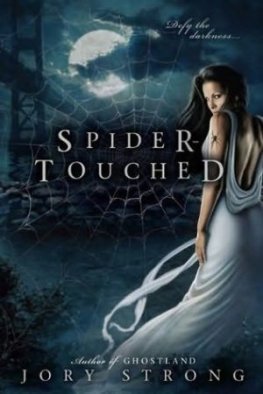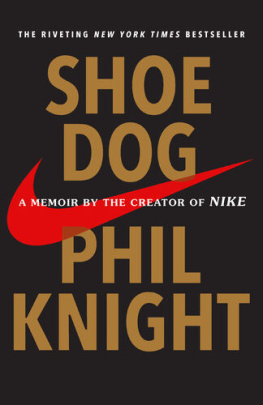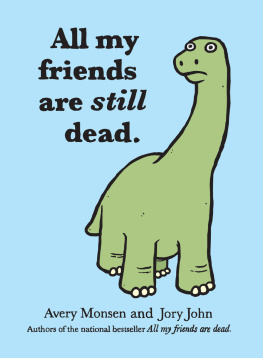Jon Jory - TIPS: Ideas for Actors
Here you can read online Jon Jory - TIPS: Ideas for Actors full text of the book (entire story) in english for free. Download pdf and epub, get meaning, cover and reviews about this ebook. year: 2000, publisher: Smith and Kraus Inc, genre: Home and family. Description of the work, (preface) as well as reviews are available. Best literature library LitArk.com created for fans of good reading and offers a wide selection of genres:
Romance novel
Science fiction
Adventure
Detective
Science
History
Home and family
Prose
Art
Politics
Computer
Non-fiction
Religion
Business
Children
Humor
Choose a favorite category and find really read worthwhile books. Enjoy immersion in the world of imagination, feel the emotions of the characters or learn something new for yourself, make an fascinating discovery.
- Book:TIPS: Ideas for Actors
- Author:
- Publisher:Smith and Kraus Inc
- Genre:
- Year:2000
- Rating:5 / 5
- Favourites:Add to favourites
- Your mark:
- 100
- 1
- 2
- 3
- 4
- 5
TIPS: Ideas for Actors: summary, description and annotation
We offer to read an annotation, description, summary or preface (depends on what the author of the book "TIPS: Ideas for Actors" wrote himself). If you haven't found the necessary information about the book — write in the comments, we will try to find it.
TIPS: Ideas for Actors — read online for free the complete book (whole text) full work
Below is the text of the book, divided by pages. System saving the place of the last page read, allows you to conveniently read the book "TIPS: Ideas for Actors" online for free, without having to search again every time where you left off. Put a bookmark, and you can go to the page where you finished reading at any time.
Font size:
Interval:
Bookmark:
Tips
Ideas for Actors
by Jon Jory
SK
A Smith and Kraus Book
DEDICATION
To Marcia, my wife and my crucial collaborator
A Smith and Kraus Book
Published by Smith and Kraus, Inc.
PO Box 127, Lyme, NH 03768
www.SmithKraus.com
Copyright 2000 by Jon Jory
All rights reserved
Manufactured in the United States of America
Cover and Text Design by Julia Hill Gignoux
First Edition: March 2000
8 7 6 5 4 3 2 1
CAUTION: Professionals and amateurs are hereby warned that the material in this book is fully protected under the copyright laws of the United States of America, and of all countries covered by the International Copyright Union (including the Dominion of Canada and the rest of the British Commonwealth), and of all countries covered by the Pan-American Copyright Convention and the Universal Copyright Convention, and of all countries with which the United States has reciprocal copyright relations. All rights, including professional, amateur, motion picture, recitation, lecturing, public reading, radio broadcasting, television, video or sound taping, all other forms of mechanical or electronic reproductions such as CD-ROM and CD-I, information storage and retrieval systems and photocopying, and the rights of translation into foreign languages, are strictly reserved.
The Library of Congress Cataloging-In-Publication Data
Provided by Quality Books, Inc .
Jory, Jon.
Tips for actors / by Jon Jory1st ed.
p. cm. (Career development series)
ISBN 1-57525-202-3 / 978-1-57525-202-5
1. Acting. I. Title. III. Series.
PN2061.J67 2000 792.028
QBI00-294
Contents
Foreword
Tips. The way 90% of all acting knowledge gets communicated. My mother and father (actors for over fifty years) would finish the play, repair to a bar with the cast, and my father, surveying the table, would ask, Any tips for me tonight? The table was then open for business. There would be talk about laughs that had been lost, builds that didnt function, entrances that should be delayed a half-beat, moments that should be underplayed and subtext that wasnt clear (though they didnt call it that, of course). School was open for the actors. The University of the Tip!
It still works that way. Often, its a word to the wise in the green room or over a beer in the bar. Sometimes its a whispered conversation with a veteran actor just outside the rehearsal room. Somebody has a little practical advice about a moment or a scene, or they remind you of some basic truth youve forgotten in the heat of battle. They pass on something they heard from an ancient character man who heard it from John Barrymores dresser who heard it from someone who had heard it from Edwin Booth. The long, long chain of tips.
When you get into the all-consuming white-hot heat of working on a role, and the old cant-see-the-forest-for-the-trees loss of objectivity sets in, you may not have the time or inclination to re-read all of Stanislavski, and Peter Brook is stimulating but maybe a little vague on the details, and the directorwell, the two of you maybe lack a little something in chemistry and communicationit might be that what you need is a tip. The good tip either clears up the problem immediately, stimulates you to find a solution, or points out some work you need to do to break out of your double bind.
In this book, you will find a slew of them. They range all the way from defining that pesky word action, to discussing how to kill an unwanted laugh, getting the focus when you need it, talking to the fight choreographer about a dangerous moment, dealing with a diva, or finding the subtext under the innocuous line. Somewhere in here is the solution to whats nagging you in rehearsal or performance. And the good news right now is they are short, clear, and useful. As far as stimulation goes, the tips are hopefully like the sand in the oysterjust enough to get you going on a new tack (pearl to arrive shortly).
Dip in and open some new doors.
Jon Jory
How to Use Tips
Ah, yes, the users guide. You could read it cover to cover, but its pretty tightly packed, and that might be a little like drinking several expressos at a sitting. Take it to rehearsal and, in your downtime, skim until youre engaged by an idea. Take it home and skim until something relates to the days rehearsal. Take it to your dressing room and, while you wait for your second act entrance, skim until it opens a closed moment for you. Take it to class and see if it doesnt motivate you to try something new.
The book is broken down into general categories of related tips, everything from breaking down text, to using space, to building the role. An interest in one may carry you through the entire section, but the basic idea here is tip dipping.
If youve had pretty good training or youve been working as an actor or director for awhile, youve run across a high percentage of this stuff elsewhere. But can you access it? Is it there when you need it? Do you not occasionally fail to act on it under the pressures of rehearsal or performance?
These are tools and stimuli and, much as the good carpenter needs a belt for them so they will be easy at hand, you should keep this book nearby. Like your notebook, your script, your highlighter, pencil and pen, your gaffers tape and your blocking notation, its meant to be practicalits meant to do a job for you.
This is the voice of the old theatre rat whispering in your ear on a five-minute break. This is the impasse breaker, the horizon scanner, the kick-starter and the how-the-hell-did-I-forget-that tickler. Like all creative tools, its not a how-to, its a how-maybe-to. Its the common wisdom.
Text Study
CIRCUMSTANCES
These are not subjective opinions. These are facts in the text. It is six oclock. It takes place in Las Vegas. Jack is a butcher, etc. Sit down and list them. Then ask questions of yourself to break them open. It says Bethany had an abortion. Ask why. Ask if religion affects her choice. Ask if anyone influenced her choice. Ask whatever strikes you as pertinent, answer and ask again until it creates a lake of information you can draw on in rehearsal. To break open a single circumstance may take a half-hour, so pick the most pertinent to work on if your time is limited. This is crucial work. If you dont understand the circumstances, you cant build the role appropriately or understand the rules of the text. Acting serves the text, and the text gives boundaries to the actor. Lets call these boundaries the rules. The circumstances are the rules for that particular play. We need the rules to do the work.
BEATS
The beat is to acting as the paragraph is to writing. The beat changes when the subject (textual or sub-textual) changes. The beat is ordinarily defined not from your characters viewpoint but from the texts. Beats are ordinarily marked by the actor with brackets [ ]. The uses of marking the beats are many. It forces us to ask what is really going on before we can identify it. It helps us understand the texts rhythm and style as it would in music. It points out that a transition exists and must be played between beats. It gives us units of text that we can further analyze for context and structure. It makes clear when the action changes. Sometimes a beat may seem to be about going shopping but is really about the characters relationship on a subtextual level. The beat then ends when the subtext changes. Beats strung end to end with different actions, obstacles, and tactics identified create the roles landscape.
AN ACTION
Whole tomes are written on the action. Whole theories make it central. Every actor claims to use them. Why then do they seem so often absent? To remind us, the action is either what you want the other person onstage to do, to feel, or to understand. If youre alone onstage, the action has the same definition only applied to you. Because large roles are made up of hundreds of actions, very few performers will do all that homework. Admit you are lazy and use them for spot work. This moment isnt workingwhats the action? This beat seems unclearwhats the action? I feel self-conscious herewhats the action? For an action to be dramatic, it needs a counter-balancing obstacle; so make sure you know what it is. When you know the action and the obstacle and it still isnt working, raise the stakes. Simple as that.
Next pageFont size:
Interval:
Bookmark:
Similar books «TIPS: Ideas for Actors»
Look at similar books to TIPS: Ideas for Actors. We have selected literature similar in name and meaning in the hope of providing readers with more options to find new, interesting, not yet read works.
Discussion, reviews of the book TIPS: Ideas for Actors and just readers' own opinions. Leave your comments, write what you think about the work, its meaning or the main characters. Specify what exactly you liked and what you didn't like, and why you think so.










